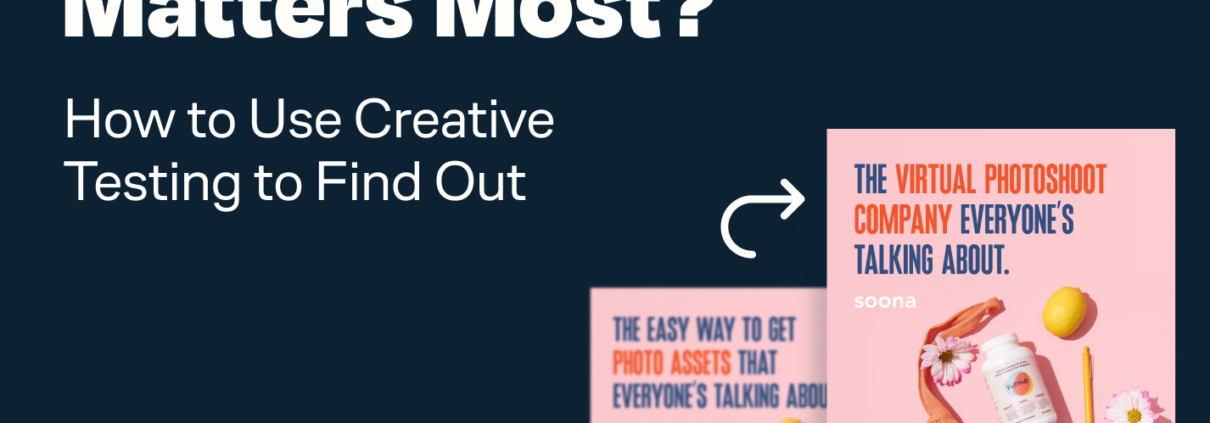Which Product Features Matter Most? How to Use Creative Testing to Find Out
As a CMO or Head of Growth, you are most likely keenly aware of what makes your product powerful. The question is, do you know which features matter the most to your potential customers, or better yet, their pain points? If you have a very technical or complex offering, it can certainly be a challenge knowing which of your features or benefits will resonate the most with your prospects. That’s where creative testing comes in.
At Tuff, as a growth marketing agency, we’ve learned to leverage creative testing to provide some quantitative measurement of this riddle. If you have a lot of features you’re eager to showcase and don’t know which ones to include in your assets, this is a good problem to have and solving it will clarify your creative strategy moving forward.
Let’s take a look at how Tuff handles creative testing for different (and very technical/complex) product features.
Methodology
Say you have a SaaS platform that is simply outstanding from your competitors. You’ve got a platform that covers it all: better pricing, more robust tech, easier integration, overall user-friendliness – you’ve simply thought of everything. What do you do with all those valuable features? Give each one a tiny bullet point in an over-crowded asset? Create a rambling two minute video outlining each benefit in detail?
Quite the opposite. With an abundance of product features, you need to have an abundance of creative assets that cover each one thoroughly. Look at all four of your key features or benefits as your four “hooks” for your different ad concepts. That allows you and your team to really get after what’s driving growth and sticking with your prospects.
Here’s our recipe for success: Isolate one per ad concept and run all these concepts concurrently. Make sure to give all your concepts a fair shot at serving to your audiences fairly equally (remember we’re talking about creative testing, not audience testing here!). Take a look at your KPIs (CTR, CPA, CVR) for each concept and compare them against each other. Since you’ve done the hard part of whittling down a clear and concise value proposition for each concept, whichever ad performs the best will give you the answer to your question of which feature matters most to your core audience.
At Tuff, we start out by casting a wide net with our creative assets, addressing an equally wide array of features and benefits. Once we’ve given them all a proper test, we double down on the features that performed the strongest, and save the others for later (they might perform better with a different audience, or maybe they’re better utilized in another channel!).
By doing your due diligence of testing different product features, you can eliminate future guessing and have an informed, data-driven creative strategy that strikes at the heart of your prospects’ pain points of your respective industry.
Tuff Creative Testing In Action
There are many, many, many different ways to approach A/B testing, and we’ll spill the beans now: they’re not all effective. Understanding which button color generates a stronger CTR is handy to know…but is the juice really worth that squeeze?
Instead of A/B testing our faces off, our approach is to—before we think deeply and thoughtfully about how developing a hypothesis—we heavily diversify the look and feel of our ad creative. That way, before we put pen to paper designing our test, we have high confidence that we’re doing so within an ad creative format that resonates with our target audience. Meaningful testing shouldn’t come at the expense of performance.
IronVest
To put it simply, we’re enthralled by IronVest’s simple, comprehensive approach to online security. Especially because the app that their team has developed is far ahead of the curve of traditional password protectors or online security systems. The app is absolutely packed with rich, powerful features but a burning questions we wanted to answer out the gate was “which one(s) really capture our target audiences’ attention? Which mean the most?”
Both the IronVest and Tuff team alike were hungry for answers. But before we dove into developing a test to unlock it, we first wanted to take a beat to understand two critical questions:
- How do we quickly and clearly communicate to our audience what IronVest is?
- What is the ideal ad creative format that resonates with our audience?
To set the stage for an effective feature test, we flighted a round of ad creative characterized by heavy diversification of look, feel, and messaging. Two assets emerged victorious when it came to performance (primarily honing in on click-through rate (CTR)/cost per click (CPC) as well as conversion rate (CVR)).
Concept 5 and Concept 6 reigned supreme.
Here’s what we observed:
- “Security” and “password manager” were two common threads between our top performers. As well as language around “we’re different/uncommon.”
- Playful/branded shapes and bold colors were common between the two assets.
- Both assets have a highly “futuristic” or modern vibe about them.
So, armed with this knowledge, we developed an asset that we have high confidence would perform as a standalone ad and versioned it to highlight three different top features and one value prop.
We made a strategic choice to include one value prop (as opposed to sticking to all features) is because on rare occasions, we find that there’s no simple answer to “which feature performs best” and instead discover that uplifting features secondary to benefits or brand statements can outperform. You’ll see the value prop we chose is directly tied to our findings above.
Here’s what we built:
A Variant: Selfie-biometrics password protection (feature)
B Variant: Masked emails (feature)
C Variant: Password protector that doesn’t store your data (value prop)
D Variant: Virtual phone numbers
In order to get optimal and cleanest results, we’ll isolate each of these assets in its own separate campaign (leaning on Facebook’s A/B test tool works well here too) and flight them together, waiting until each asset has amassed statistically significant spend to pull results.
The best part: once we pull our findings, the work doesn’t stop there. It will be crucial for us to update, retweak, and modify creative, weave in additional features and value props, and generally a/b test our winner from this round to come out the other side with a strong, definitive statement about which feature drives best results.
Stay tuned!
Our Advice: Baby Steps
Platforms with technical and complex elements can be tricky to properly showcase. You won’t have enough time or ad real estate to tell the full story. Instead, isolate a few of your strongest talking points and go deeper and more into detail with those benefits and features. Your ad performance will tell the story, and you’ll have clarity on where to go in the future!






